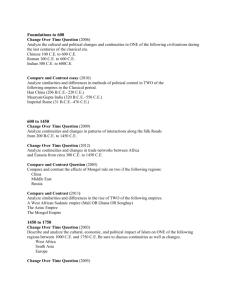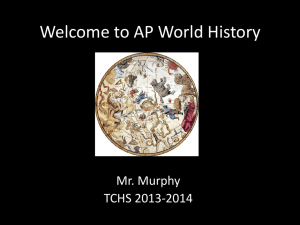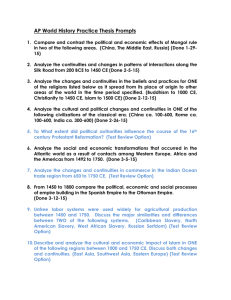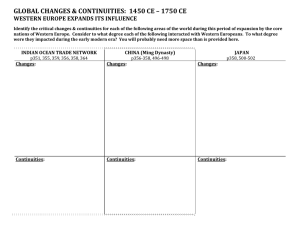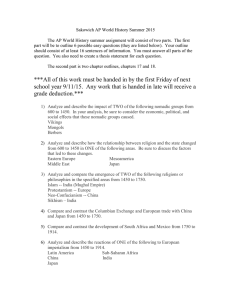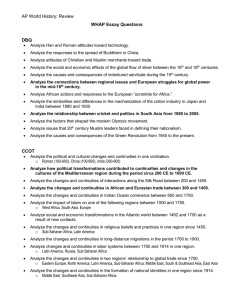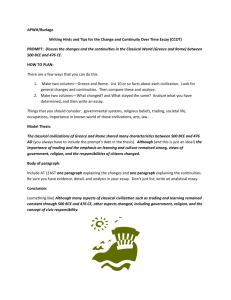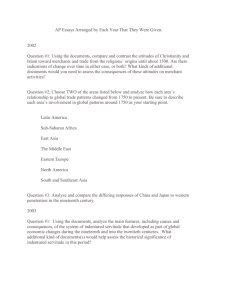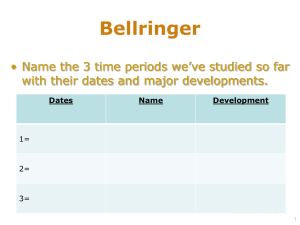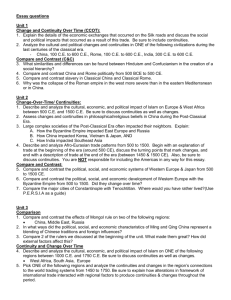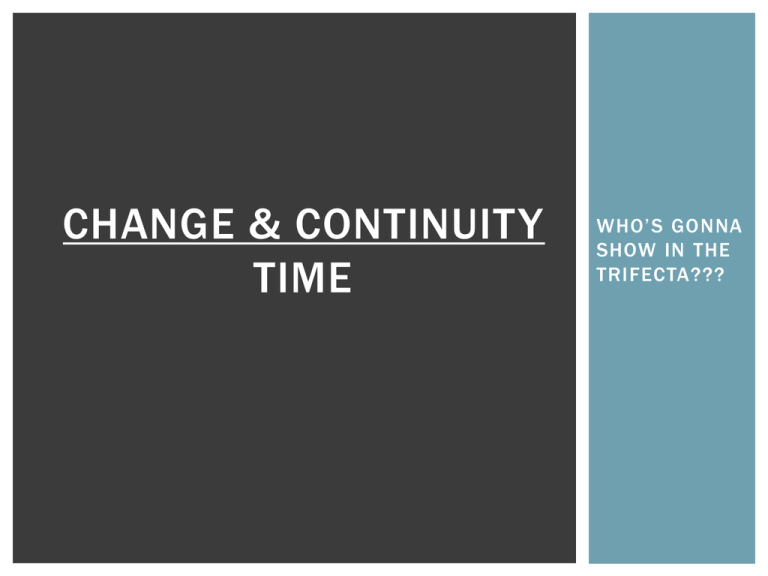
CHANGE & CONTINUITY
TIME
WHO’S GONNA
SHOW IN THE
TRIFECTA???
THE QUESTION OF THE QUESTION
Analyze how political transformations contributed to
continuities and changes in the cultures of the Mediterranean
region during the period circa 200 C.E. to 1000 C.E.
Analyze continuities and changes in trade networks between
Africa and Eurasia from circa 300 C.E. to 1450 C.E.
Analyze continuities and changes in the ways ONE of the
following regions participated in interregional trade during the
period circa 1500 to 1750.
Latin America, including the Caribbean
Sub-Saharan Africa
Southeast Asia
THE QUESTION OF THE QUESTION
Three parts (four if we’re being technical) to every question
Time Period (Six Eras)
Subject (PERSIA)
Location (Five Regions)
Also, Changes & Continuities
TIME PERIODS
Foundations
8000 BCE – 600 BCE
Classical Period
600 BCE – 600 CE
Post-Classical Period
600 CE – 1450 CE
Interregional Period
1450 CE – 1750 CE
Nationalist & Industrial Period
1750 CE – 1900 CE
Globalization Period
1900 CE – Present
BCC CHART
The Clash
(1976-1986)
Beginning
Change
Continuity
Joe Strummer, Mick
Jones, Paul Simonon,
Terry Chimes
Bunch of drummers,
including Topper
Headon & Mick Jones
leaves
Joe Strummer & Paul
Simonon
Musical Style
‘77 Style Punk (The
Clash)
Jazz & Reggae
influence (London
Calling), Disco & Funk
(Sandinista! &
Combat Rock)
Heavily Politicized
Lyrics, Social
Commentary
Popularity &
Commercial
Viability
Part of the “inner
circle” of British Punk
Bands, overshadowed
by the Sex Pistols
Became known as
“the only band that
matters” in the late
70’s, signed to CBS
Records
Frequently identified
as a founding band in
the British punk
scene
Line-Up
YOUR QUESTION

